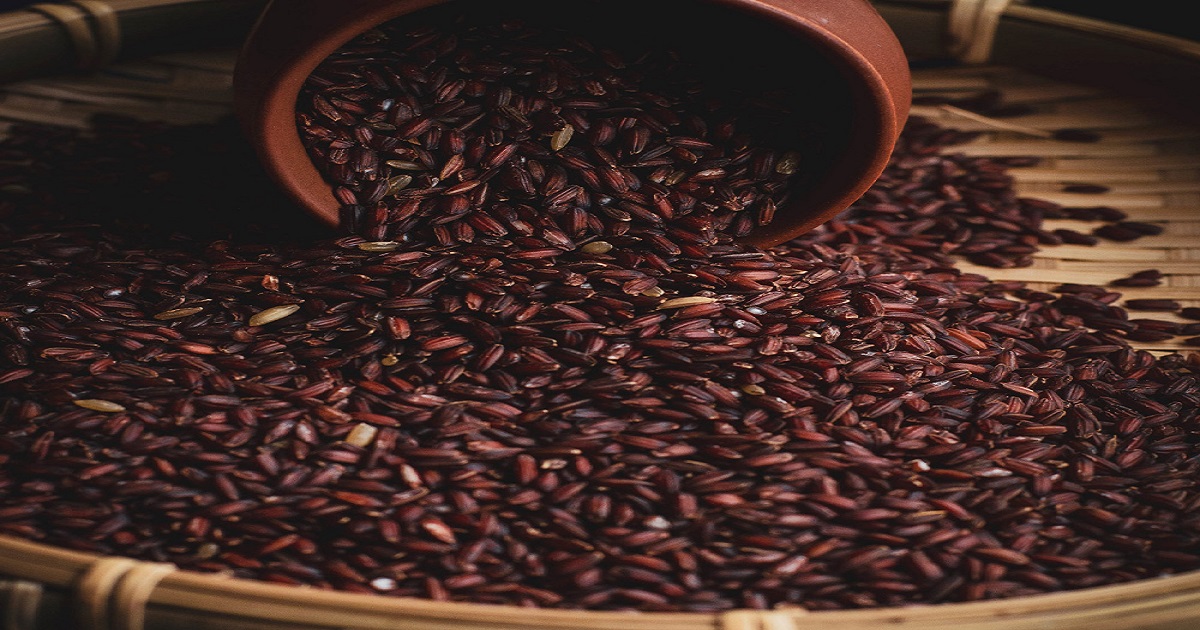Introduction
In the vast tapestry of culinary treasures from around the world, certain ingredients stand out not only for their taste but also for their cultural significance and nutritional value. Karupu Kavuni rice, also known as Black Rice, is one such gem that has captured the fascination of food enthusiasts and health-conscious individuals alike. In this article, we delve into the depths of Karupu Kavuni, unraveling its intriguing origins, health benefits, culinary uses, and cultural importance.
The Legend of Karupu Kavuni
Legend has it that Karupu Kavuni rice originated centuries ago in the southern regions of India, particularly in the state of Tamil Nadu. According to folklore, this rare variety of rice was once reserved exclusively for royalty and nobility, earning it the moniker “Emperor’s Rice.” Its deep black color and distinct aroma were believed to imbue strength and vitality to those who consumed it. Over time, Karupu Kavuni rice became intertwined with local traditions and customs, featuring prominently in auspicious ceremonies and festive feasts.
Nutritional Value of Karupu Kavuni
Beyond its captivating appearance and historical significance, Karupu Kavuni rice boasts impressive nutritional credentials. Rich in antioxidants, fiber, and essential vitamins and minerals, it offers a range of health benefits. Studies have shown that regular consumption of black rice may help reduce the risk of chronic diseases such as heart disease, diabetes, and certain cancers. Its high anthocyanin content, responsible for its deep color, contributes to its antioxidant properties, protecting cells from oxidative damage and inflammation.
Culinary Delights with Karupu Kavuni
While Karupu Kavuni rice has deep roots in traditional South Indian cuisine, it has also found its way into modern kitchens around the world. Chefs and home cooks alike are discovering innovative ways to incorporate this unique ingredient into a variety of dishes. From savory pilafs and stir-fries to indulgent desserts and puddings, the versatility of Karupu Kavuni rice knows no bounds. Its nutty flavor and chewy texture add depth and complexity to culinary creations, making it a favorite among food enthusiasts seeking new flavors and experiences.
Cultivation and Harvesting
The cultivation of Karupu Kavuni rice follows time-honored practices that prioritize sustainability and environmental stewardship. Grown primarily in the fertile lands of Tamil Nadu, farmers adhere to traditional methods of cultivation, eschewing synthetic fertilizers and pesticides in favor of organic alternatives. The harvesting process is labor-intensive, requiring meticulous care to ensure optimal ripeness and quality. By preserving these age-old practices, farmers not only safeguard the integrity of the rice but also uphold the rich cultural heritage associated with it.
Karupu Kavuni in Traditional Medicine
In addition to its culinary appeal, Karupu Kavuni rice has long been valued for its medicinal properties in traditional Indian Ayurvedic medicine. Ancient texts extol its virtues as a rejuvenating tonic and digestive aid, promoting overall health and well-being.
Various preparations made from Karupu Kavuni rice, such as porridges, decoctions, and herbal infusions, are believed to alleviate ailments ranging from digestive disorders to skin conditions. While modern science continues to explore its therapeutic potential, the wisdom of centuries past underscores its enduring relevance in holistic healing practices.
Global Recognition and Market Trends
In recent years, Karupu Kavuni rice has garnered attention beyond its native shores, emerging as a sought-after superfood in international markets. Its exotic allure and nutritional profile have piqued the interest of health-conscious consumers and culinary enthusiasts worldwide.
As demand grows, efforts are underway to promote sustainable cultivation practices and expand production to meet market needs. With its rising popularity, Karupu Kavuni rice is poised to make a significant impact on global cuisine and dietary trends.
Challenges and Conservation Efforts
Despite its growing popularity, Karupu Kavuni rice faces challenges related to biodiversity loss and environmental degradation. Intensive farming practices, coupled with urbanization and climate change, threaten the delicate ecosystems where this rare rice variety thrives.
To address these challenges, conservationists and agricultural experts are working to preserve genetic diversity, promote sustainable farming methods, and protect the natural habitats of Karupu Kavuni rice. By fostering collaboration among farmers, researchers, and policymakers, they aim to safeguard this cultural and culinary treasure for future generations.
Karupu Kavuni: A Symbol of Cultural Heritage
At its core, Karupu Kavuni rice is more than just a culinary ingredient; it is a symbol of cultural heritage and identity. Across generations, it has been passed down as a cherished legacy, connecting people to their roots and traditions. Whether enjoyed in a humble family meal or showcased in a gourmet restaurant, Karupu Kavuni rice serves as a reminder of the rich tapestry of flavors and experiences that define our culinary heritage.
Exploring Karupu Kavuni Beyond Borders
As global interest in diverse cuisines continues to grow, Karupu Kavuni rice has the potential to bridge cultural divides and foster appreciation for culinary diversity. Through culinary exchanges and cross-cultural collaborations, chefs and food enthusiasts are discovering new ways to incorporate this unique ingredient into their repertoire. By celebrating the flavors and traditions of Karupu Kavuni rice, we enrich our culinary landscape and deepen our understanding of the world around us.
The Future of Karupu Kavuni
Looking ahead, the future of Karupu Kavuni rice is filled with promise and potential. As awareness of its nutritional benefits and cultural significance spreads, demand for this exotic grain is expected to rise. However, to ensure its long-term sustainability, it is essential to prioritize conservation efforts, promote responsible farming practices, and support local communities that depend on its cultivation. By embracing the richness of Karupu Kavuni rice, we honor its legacy and pave the way for a brighter, more flavorful future.
Conclusion
In conclusion, Karupu Kavuni rice is a treasure trove of flavor, nutrition, and cultural heritage. From its ancient origins to its modern-day revival, it continues to captivate hearts and palates around the world. As we embark on this culinary journey, let us savor the richness of Karupu Kavuni rice and celebrate the traditions that have sustained it for centuries.




















